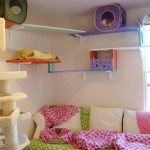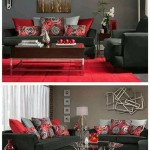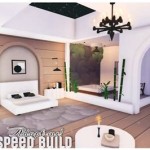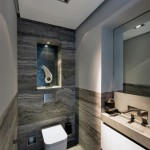```html
Stylish Room Decoration: Elevating Your Living Space
Stylish room decoration transcends mere aesthetics; it involves creating a harmonious environment that reflects personality, promotes well-being, and enhances functionality. Achieving a stylish room requires careful consideration of design principles, color palettes, furniture selection, and the strategic use of accessories. It's a process of thoughtful curation, balancing individual preferences with established design guidelines to produce a space that is visually appealing and comfortable.
The foundation of any successful room decoration project lies in understanding the existing space. This includes assessing the room's dimensions, natural light sources, architectural features, and existing furniture. Identifying the room's focal point is also crucial. A focal point, such as a fireplace, a large window, or a statement piece of art, serves as an anchor for the design and helps to guide the arrangement of other elements within the room.
Understanding Color Theory and Its Application
Color plays a pivotal role in shaping the mood and atmosphere of a room. A well-chosen color palette can evoke feelings of tranquility, excitement, or sophistication. Understanding basic color theory principles is essential for creating a cohesive and visually appealing space. The color wheel, comprising primary, secondary, and tertiary colors, provides a framework for understanding color relationships and creating harmonious combinations.
Complementary colors, located opposite each other on the color wheel, create a vibrant and dynamic effect when used together. Analogous colors, located adjacent to each other, produce a more harmonious and calming effect. Monochromatic color schemes, using different shades and tints of a single color, offer a sophisticated and minimalist aesthetic. Choosing the right color temperature is equally important. Warm colors, such as reds, oranges, and yellows, tend to create a cozy and inviting atmosphere, while cool colors, such as blues, greens, and purples, promote a sense of calm and serenity.
Beyond the basic principles, consider the psychological impact of different colors. Blue is often associated with trust and intelligence. Green is linked to nature, growth, and balance. Yellow radiates happiness and optimism. Red can evoke feelings of passion, energy, or even aggression. The intensity and saturation of colors also impact the overall mood. Muted tones offer a more subtle and understated elegance, while bold and saturated colors create a more dramatic and lively effect. Using color strategically can visually alter the perception of a room’s size. Light colors will make a room appear larger and more airy, while dark colors can make a large room feel cozier and more intimate. The ceiling color should also be considered. Painting a ceiling in a lighter color than the walls tends to make the ceiling appear higher, opening up the space.
Strategic Furniture Selection and Placement
Furniture is more than just functional; it's an integral part of the room's aesthetic and directly impacts the functionality of the available space. Careful selection and placement of furniture are vital for creating a stylish and comfortable environment. Begin by considering the room's primary function and the activities that will take place within it. This will help determine the type and size of furniture needed.
Scale and proportion are crucial considerations. Overly large furniture can overwhelm a small room, making it feel cramped and cluttered. Conversely, undersized furniture can look lost and insignificant in a spacious room. Maintaining a balance between the size of the furniture and the dimensions of the room is key to creating visual harmony. Traffic flow is another important factor to consider. Arranging furniture in a way that allows for easy movement and avoids obstructing pathways is essential for creating a functional and comfortable space. Create conversational groupings where appropriate, allowing people to comfortably interact. Consider the placement of the sofa, chairs, and tables to foster a sense of intimacy and connection.
Investing in quality pieces that are both durable and aesthetically pleasing is a wise decision. Consider the style of furniture and how it complements the overall design scheme. Mixing different styles can create an eclectic and interesting look, but it's important to do so with careful consideration, ensuring that the pieces share some common elements, such as color, texture, or material. Incorporating storage solutions is also essential for maintaining a clutter-free and organized space. Consider built-in shelving, storage ottomans, or decorative baskets to maximize storage capacity. Don’t forget to layer lighting to complete the space. Different types of lighting can drastically change the mood from bright and invigorating to soft and intimate.
The Art of Accessorizing and Personalizing
Accessories are the finishing touches that add personality, character, and interest to a room. They provide an opportunity to express individual style and create a space that truly feels like home. Accessorizing involves selecting and arranging items such as artwork, cushions, rugs, plants, and decorative objects to enhance the room's overall aesthetic.
Artwork is a powerful way to add visual interest and express personal taste. Choose pieces that resonate with you and complement the room's color palette and style. Consider the size and placement of artwork carefully. A large statement piece can serve as a focal point, while smaller pieces can be grouped together to create a gallery wall. Cushions and throws are a simple and affordable way to add color, texture, and comfort to a room. Experiment with different patterns, fabrics, and sizes to create a visually interesting arrangement. Rugs define spaces, provide warmth, and add visual interest to the floor. Choose a rug that complements the room's color palette and furniture. Consider the size of the rug in relation to the room's dimensions and the furniture arrangement. Houseplants introduce a touch of nature, purify the air, and add life to a room. Choose plants that thrive in the room's lighting conditions and complement the overall design. Decorative objects, such as vases, sculptures, and candles, add personality and interest to a room. Choose objects that reflect your personal style and interests. Consider the placement of decorative objects carefully, grouping them together in vignettes or displaying them on shelves or tabletops.
Personalization is key to creating a space that feels authentic and unique. Incorporate items that hold sentimental value, such as family photographs, travel souvenirs, or handmade crafts. These personal touches will transform a house into a home, reflecting individuality and creating a sense of belonging. Furthermore, consider regularly refreshing the accessories to keep the room looking fresh and updated. Swapping out cushions, rugs, or artwork can dramatically change the look and feel of a room without requiring a complete overhaul.
```
Bedroom Ideas 18 Modern And Stylish Design

30 Stylish Bedroom Wall Decor Ideas And Tips

Bedroom Decoration Ideas For Your Home Designcafe

38 Cool Kids Room Ideas How To Decorate A Child S Bedroom

30 Stylish Bedroom Wall Decor Ideas And Tips

10 Stylish Bedroom Decor Ideas Goodhomes Co In

80 Stylish Bedroom Design Ideas Decorating Tips And Examples

Luxury Stylish Bedroom Decoration Ideas In 2025 Interior Room Modern Decor

Modern Stylish Home Decor Ideas Living Room Decoration Bedroom Designs And Styles In 2025 Small Guest

The Best Bedroom Decor Ideas Stunning Designs In 2025







